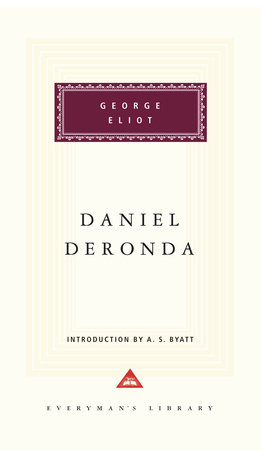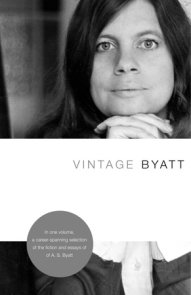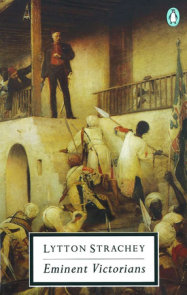READERS GUIDE
Questions and Topics for Discussion
1. 1. Examine George Eliot’s first epigraph, which begins, “Let thy chief terror be of thine own soul.” Why do you think the author chose to set her story in motion with this poetic warning?
2. 2. Summarize the two intersecting story lines represented by Gwendolen Harleth and Daniel Deronda. The prominent critic F. R. Leavis suggested that Daniel Deronda would be vastly improved by removing the Jewish story line, leaving Gwendolen Harleth’s story to stand on its own. Do you agree that this literary surgery would have been an improvement? What would be lost if Eliot had chosen to shape the novel in this fashion?
3. 3. Consider how the principal characters in the novel – the Mallingers, the Meyricks, Gwendolen, Grandcourt, Mirah, and Mordecai – view Daniel Deronda. Does it contrast with the way he views himself? How do his self-image and his aspirations change over the course of the novel?
4. 4. Speaking through a fictional character in an 1876 piece he wrote for The Atlantic Monthly, Henry James noted that “Gwendolen Harleth is a masterpiece. She is known, felt, and presented, psychologically, altogether in the grand manner. Beside her and beside her husband – a consummate picture of English brutality refined and distilled (for Grandcourt is before all things brutal) – Deronda, Mordecai, and Mirah are hardly more than shadows.” Do you agree with his assessment?
5. 5. Daniel Deronda’s mother, the Princess Halm-Eberstein, tells her son, “You are not a woman. You may try—but you can never imagine what it is to have a man’s force of genius in you, and yet to suffer the slavery of being a girl.” Consider the female characters in the novel, including Gwendolen, Mrs. Glasher, Mirah, and the princess. What is their place in Victorian society, and how do they deal with their limited options? What gives Catherine Arrowpoint the strength to defy her parents and marry Herr Klesmer?
6. 6. In an 1876 letter to Harriet Beecher Stowe, George Eliot wrote, “As to the Jewish element in Deronda . . . precisely because I felt that the usual attitude of Christians towards Jews is—I hardly know whether to say more impious or more stupid when viewed in the light of their professed principles, I therefore felt urged to treat Jews with such sympathy and understanding as my nature and knowledge could attain to.” How would you characterize Eliot’s Victorian depiction of Jewish people and their cultural and religious heritage?
7. 7. Throughout the novel, how does Eliot explore the themes of social class, power, and respectability?
8. 8. On his wedding day, Daniel receives a letter from Gwendolen that repeats her emotional claim: “It is better—it shall be better with me because I have known you.” Do you think this is true? How would you describe the complex relationship between Gwendolen Harleth and Daniel Deronda?






















